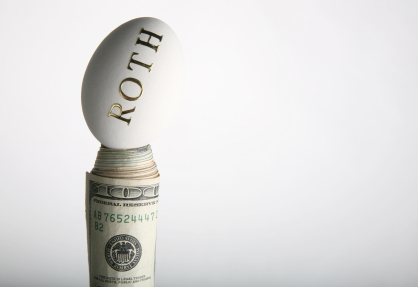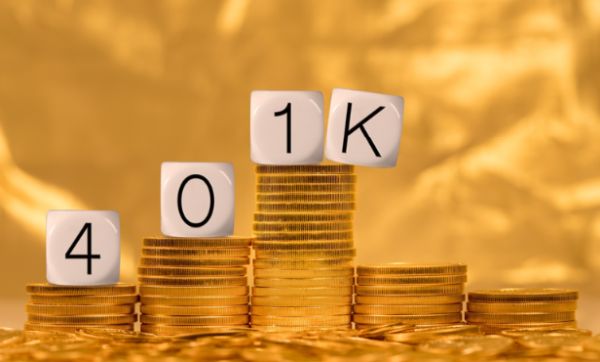How To Find The Best Roth IRA: Lessons I Learned In Investing
If you’ve been reading my site for any length of time you will know how much I like the Roth IRA as a way to save for your retirement. I’ve covered many topics on the subject from Roth IRA qualifications, Roth IRA Withdrawals, to just your general Roth IRA advice.
However in this article I’m going to show you how to find the best Roth IRA investment and what you should be looking for to maximize your potential. To do this I will be covering several lessons that I learned along the way as well.
Lesson 1: Where To Invest
 When it comes to finding the best Roth IRA account you need to be aware of where you’re investing your money at. This could be the difference between big earning to losing out big.
When it comes to finding the best Roth IRA account you need to be aware of where you’re investing your money at. This could be the difference between big earning to losing out big.
For example, one place you should not invest your money is with stock brokers. The reason for this is because they don’t have a fiduciary responsibility to making sure the investment matches your goals and retirement needs.
In fact a recent movie star J.R. from the show Dallas found out that his stock broker was churning his account by constantly buying and selling stocks within in his account to generate more commissions. Luckily in the end J.R. got his money back for a settlement of $11 million dollars. However not everyone can be this lucky because most people may not even realize they are doing it to you.
Other things you will want to stay away from are annuities since they carry so many different fees and gold IRA’s since Gold has traditionally been very volatile and risky. So now you may be wondering where you should invest your money in for a Roth IRA, the truth is mutual funds have been the best answer however just because you have a mutual fund doesn’t mean your safe yet, read on.
Lesson 2: Share Class
The next thing you need to look into once you’ve picked a mutual fund to look at the share class. The three most commonly used share classes used are A shares, B shares, and C shares.
Now you might be wondering what a share class is? A share class determines how the fees are paid on a mutual fund. For example with an A share your fees are paid up front when you set up the account. With B shares your fee’s are deferred over a period of time and payed out slowly. Finally, their are C shares, these are shares that charge at a lower sales charge but will usually charge higher annual fees.
The share class I recommend you get is an A share since it will pay your fee up front but that it will also allow you to take a break point if possible read on to learn more.
Lesson 3:Break Points
Break points will allow you to pay less of an overall sales charge in return for investing a certain amount of capital. The typical break point starts out at around $50,000 and get lower every $50,000 you go. A typical break point chart might look like this below.
- $0 to $49,999 6% Sales Charge
- $50,000 to $99,999 5.5% Sales Charge
- $100,000 to $149,999 5% Sales Charge
However if you are close to a break point you can sign what is known as a letter of intent. For example, let’s say your at $45,000 and your first break point is at $50,000 you could sign a letter of intent that would give you one year to invest the extra $5000 you need to hit the break point but you can start receive the lower sales charge now. However if you don’t meet the obligation of the letter of intent you will have to pay the full sales charge.
Lesson 4: The Fee’s
In the last couple of sections I’ve been covering share classes and break points and in this section I’m going to cover the typical fee’s you should see in a mutual fund.
The first fee you will see is a sales charge. Most companies will charge this fee and some won’t. For example companies like Vanguard and Fidelity won’t with other companies like Transamerica and American Funds will.
The typical sales charge will run around 4.5% to 6% starting out unless you qualify for a break point. However if you want to avoid these fees all together like I do, look into Vanguard.
The second fee will be an annual expense fee. This fee is charged to the account holder for maintaining and running the fund. Rates can also very widely as well for example I’ve seen some companies charge as high as 1.19% while other companies like Vanguard charge as low as 0.20%.
Finally, another fee that some mutual fund companies charge are known as 12b-1 fees. This is a fee that some brokerages may collect to pay for miscellaneous stuff like brochures and advertising. However I suggest you stay away from companies that do this as it could save you a ton of money.
In the end you will want to know what your fees are before you consider the best Roth IRA company. To find out these fees you can look one of three different places. The first is to ask your financial professional, second ask for a copy of the funds prospectus, or third look it up on the internet.
What Is the Best Roth IRA
To conclude this article you should know that their is no perfect Roth IRA, it’s not a one size fits all kind of product. However if you are looking for a place to get started the two best Roth IRA companies to get started with are Vanguard, and Fidelity since they meet all the requirements I’ve covered above. Good luck and happy investing.
Chris







3 Comments